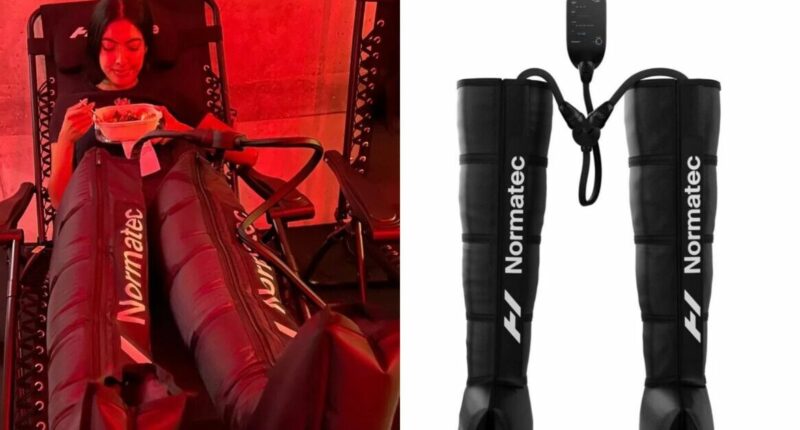Share this @internewscast.com
Since the age of 11, I’ve dealt with joint issues, muscle pains, and spasms due to my hypermobile joints, which are extremely flexible. This has resulted in continuous discomfort affecting my sleep and causing stiffness. Even using a phone or laptop can cause my hands to become immobile, and colder weather seems to intensify the pain.
To manage these symptoms, I typically use cost-effective remedies like pull-on bandages, vapor rub, and magnesium-filled baths. However, I kept coming across a more advanced solution for alleviating muscle and joint pain: compression boots.
What are compression boots?
Compression boots are air-filled covers for your feet, legs, and sometimes thighs. They inflate in a sequence to apply pressure, resembling a lymphatic drainage massage. They are believed to help decrease swelling, remove metabolic waste and lactic acid, boost circulation, and relieve muscle soreness by promoting oxygen-rich blood flow and facilitating lymphatic drainage.
They are most popular for assisting with post-exercise recovery and are used by people ranging from elite sports athletes to celebrities like Jennifer Aniston and Dua Lipa, who have both shared photos wearing these space-age-looking boots. Besides, they are recognized medically to reduce leg swelling and prevent deep-vein thrombosis (DVT) in certain health conditions.
I got the opportunity to try the Hyperice Normatec 3 Legs at a Gymbox gym. These boots are sold at retailers like Boots and Amazon, though they cost an astonishing £799. I was curious to see if they could relieve any of my pains.
Normatec 3 Compression Boots Review
I slipped my feet into the boots, zipped them up, and watched as they filled with air. Leaning back to lift my feet, the boots extended up to my thighs, tightening around every muscle down to my toes.
At first, the feeling was uncomfortable and I felt slightly panicked. The instructor told me that this is often the case, but that my body would soon adjust and I’d begin to love it. And while I was sceptical of the boots that felt like my legs had been swallowed by a blood-pressure machine, he was right. Once I got over the strange feeling of having the life sucked out of my legs, it felt quite comforting to have them elevated and held by the boots.
Pulsing up and down, and squeezing my toes, this encourages blood flow and helps muscles recover from a workout. I enjoyed the break they gave from aching muscles so much that I asked for an extra five minutes.
After my time in the boots, I felt lighter and the soles of my feet were “buzzing” on the way home. That night, my feet didn’t ache at all, and any discomfort stayed away until the following day.
There are other brands making compression boots Therabody, perhaps best known for its massage guns that aid post-exercise recovery, has its JetBoots RecoveryAir, £729 (the exact boots worn by Dua), which have in-built rechargable pumps, so there are no wires to contend with and they also have an accompanying app. Pulsio’s boots are currrently £299, down from £369.99. They deliver up to 200mmHg pressue – more than most competitors, JetBoots and Normatec’s go up to 100mmHG, for example – but note that the control panel does need to be plugged into the mains.
Boots come in different sizes to suit varying heights, so check the brands’ size guidelines before buying.














